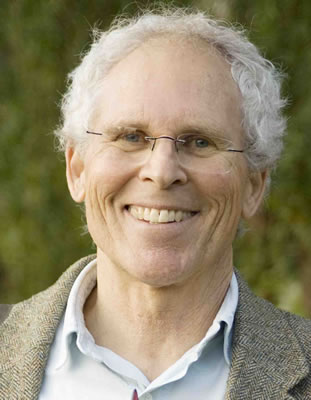Banning Ranch: From Wasteland to Parkland

“Don’t think anything is a done deal,” insisted pathologist Dr. Terry Welch, president of the Banning Ranch Conservancy in Orange County. The Laguna Canyon Conservancy hosted a program at Susi Q Center earlier this month.
Welch spoke to a roomful on the Banning Ranch Conservancy’s nearly completed effort to purchase some 400 acres of property abutting Newport Beach, Costa Mesa and Huntington Beach. Welch and his group were told by many that restoring this site to ecological health would be impossible. Because he and the Conservancy refused to accept the “done deal” argument and took action, it seems “the many” were wrong, and the Banning Ranch property has been saved from developers who wanted to erect homes and more there.
Local oil companies leased the Banning family’s land in Orange County in the 1940s and began drilling wells, some still operating. Given existing leasing agreements, stopping all drilling on the property soon may be unrealistic, though the halcyon days of oil production there ended long ago. No matter, the Conservancy’s restoration project will continue apace. That will be good for the gnatcatchers, coastal cactus wrens, blue herons, western burrowing owls and the other creatures that have survived in the area against great odds.
Seven years ago, while researching and writing a book on coastal conservationist Peter Douglas, I accompanied a delegation of Coastal Commission staffers, reporters, and other officials, including the Commission’s executive director at that time, Dr. Charles Lester, on a tour of Banning Ranch. The portion of the property we visited looked like a dreary scene out of a dystopian film on an environmental apocalypse: numerous rusting oil drums and abandoned drilling equipment are strewn about. Having worked as a roustabout one summer in an oil field as a college student, I recognized the clutter of old tools, defunct machinery, and overall carnage we were seeing.
I remember feeling disgusted and dispirited driving home from the Banning Ranch.
Fortunately, what I saw as a hopeless mess others living near the area saw as a potential wonderland of vernal pools, a sanctuary for avian and terrestrial wildlife, walking trails and more. These were the folks who started the Banning Ranch Conservancy.
They were ably led by Steve Ray, with whom I have had numerous conversations. Steve imagined what the area could be and was a brilliant strategist. Most importantly, he was an avatar of the business savvy, dedication, and optimism needed to acquire, clean up, and restore this long-abused oil field acreage. Won over by Steve, my wife and I, along with some other Lagunans, joined the Conservancy and made small donations from time to time.
Subsequently, the small, underfunded Conservancy became the mouse that roared. Successes followed. In 2016, the Coastal Commission denied a development permit, the California Supreme Court invalidated an Environmental Impact Report that would have allowed building, and Newporters Frank and Joan Randall donated $50 million toward the land purchase of what is now called the Randall Preserve.
The story told by Dr. Welch left my wife and me thinking back about the audacity of Lagunans in the 1980s, believing we could save Laguna Canyon from the clutches of the Irvine Company, which had plans for a big housing development there. Then-mayor Lida Lenney, activist Toni Iseman, and many others in town would not let the canyon go to development. Supporters throughout the Southland joined our historic march to save the canyon. Apparently, they didn’t think home-building there was a “done deal.” A preservationist victory soon followed. Ditto for the Marine Protected Area in Laguna required fending off a powerful commercial fishing industry a little over twenty years ago.
The Laguna Canyon Conservancy program on Banning Ranch offered a timely reminder that protecting nature often means getting beyond the “done deal” mindset and working with others in town and in surrounding cities on shared environmental concerns.
Tom Osborne is writing a book on California’s environmental leadership. He and his wife, Ginger, co-lead the Laguna chapter of Citizens’ Climate Lobby. [email protected].




